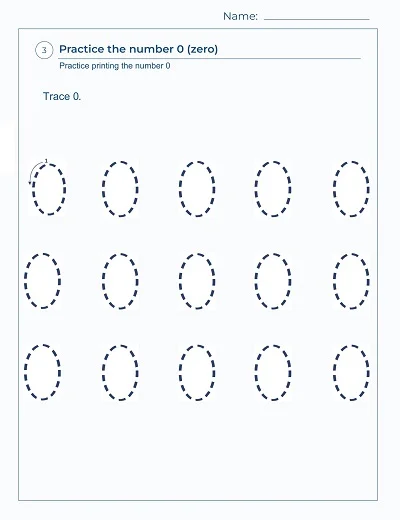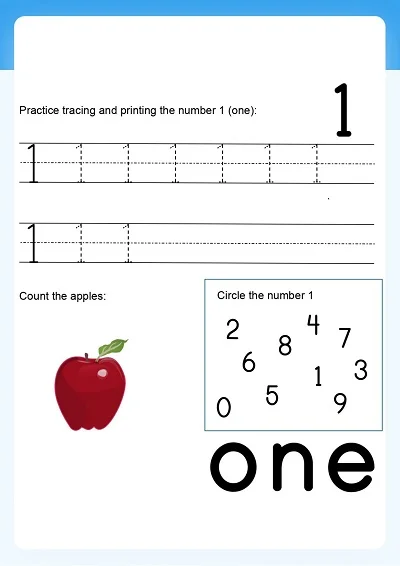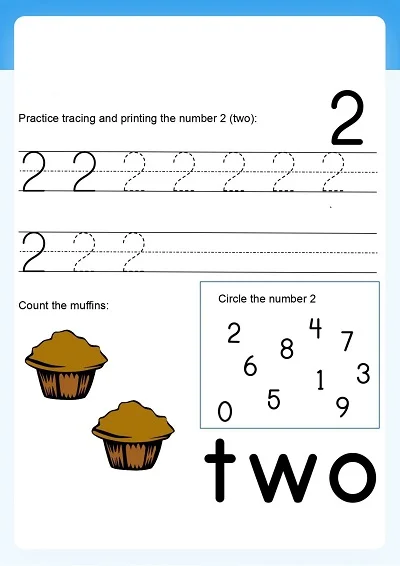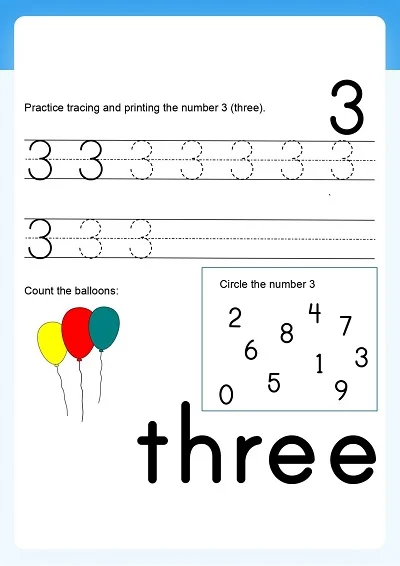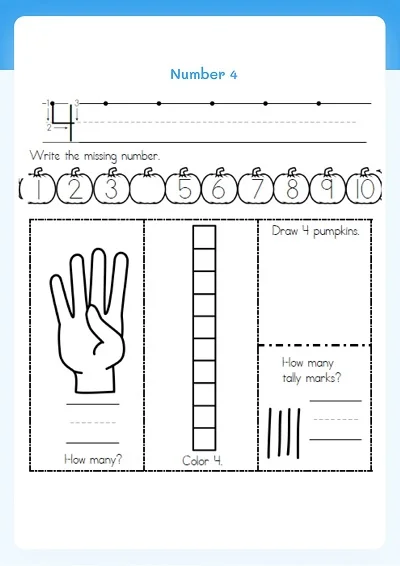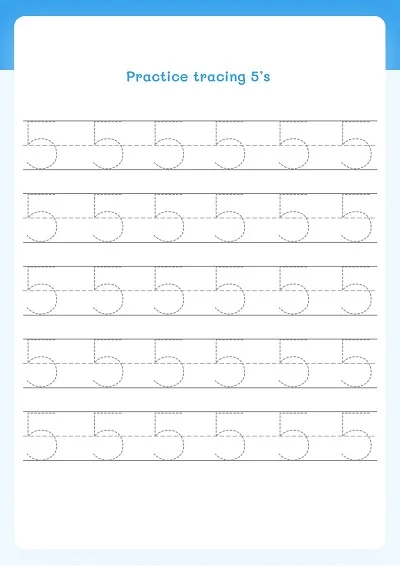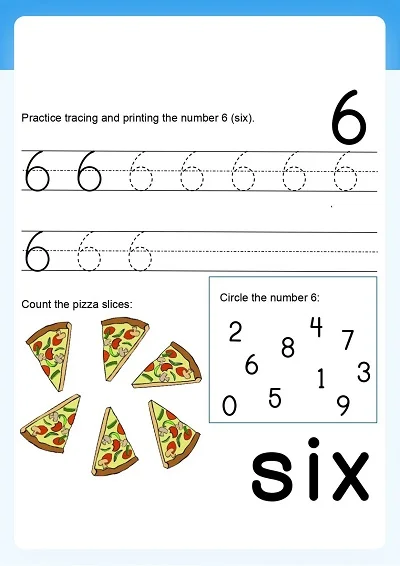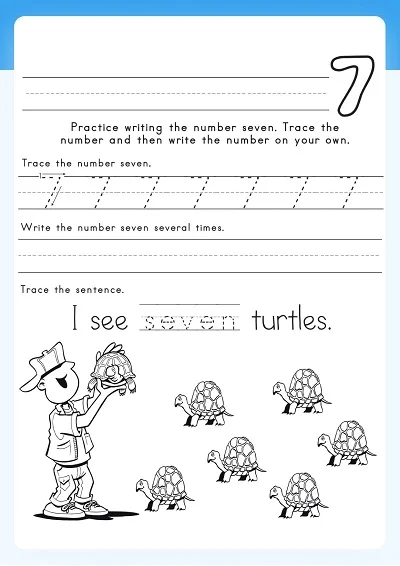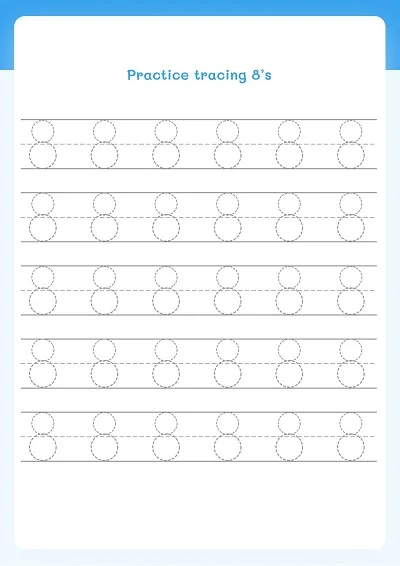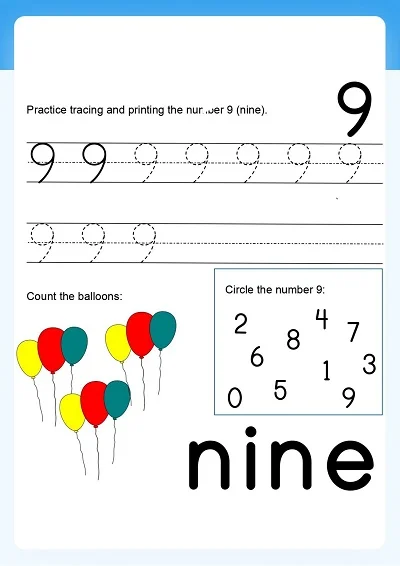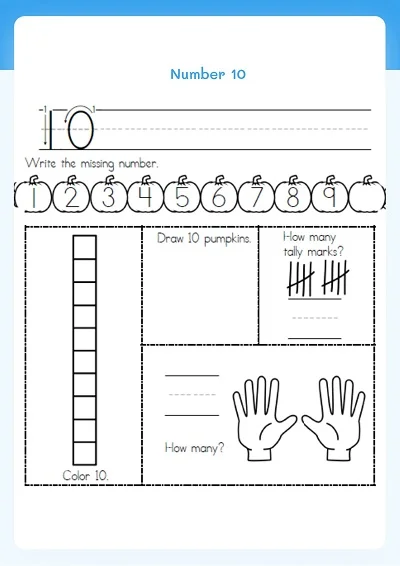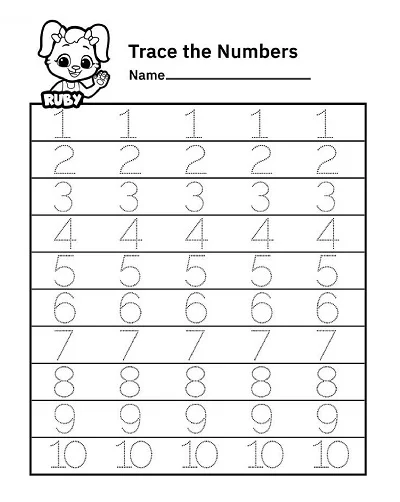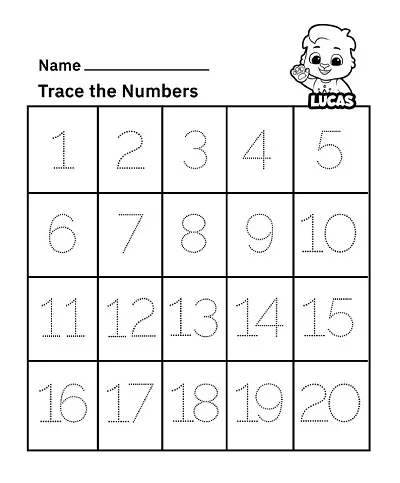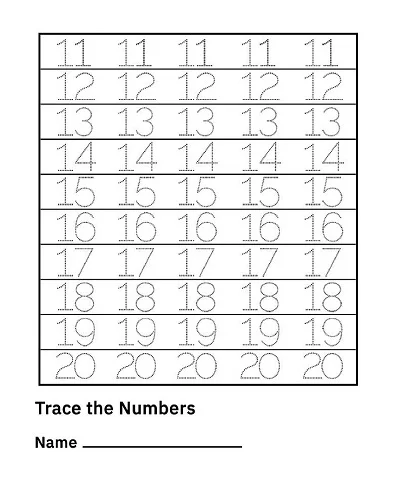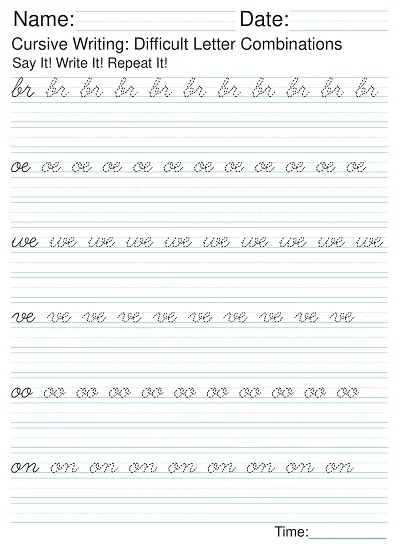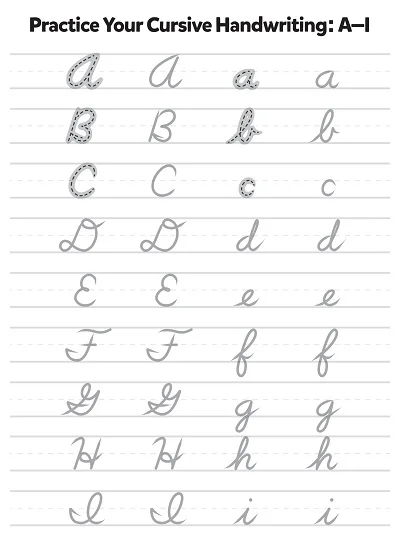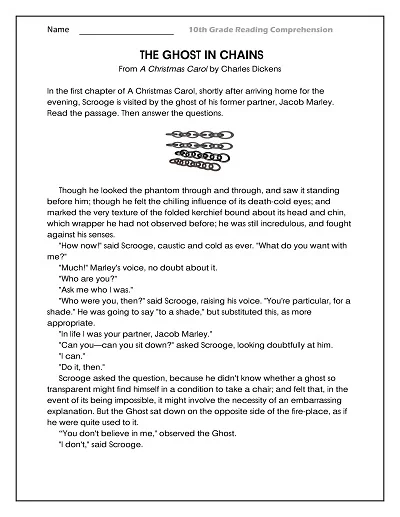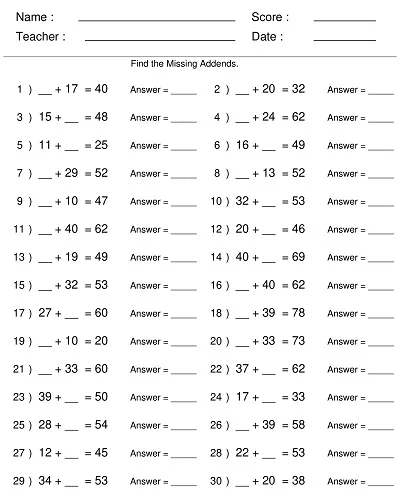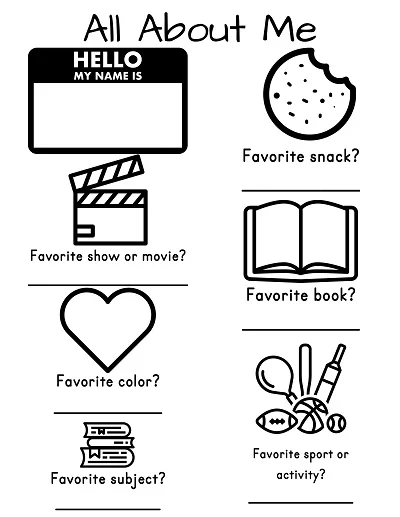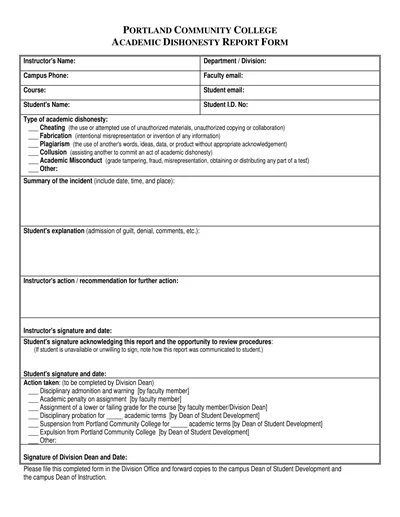Counting worksheets for kindergarten can be described as related worksheets through which students can easily learn the basics of counting. These worksheets normally comprise several activities, such as matching numbers with the respective quantity, counting objects, number writing, etc.
They are designed to be interesting and easily comprehended by children, as stimulating graphics and recognizable items create an appealing and efficient learning process. These worksheets assist in the respective weapon handling and positively impact poor fine motor skills, arithmetic, and explanations by using part of their brains to solve the exercise task.
Download Free Counting Worksheets for Kindergarten
Types of Counting Worksheets
Counting worksheets is one of the most effective manipulatives and activities in early childhood education since they enhance the learners’ numeracy skills and develop their thought processes. These resources can range from simple and text-based to complicated and fully multimedia to be useful to students of all learning capabilities and preferences.
Below are three primary types of counting worksheets commonly utilized in educational settings:
1. Basic Counting Worksheets
These worksheets are designed to be used in the earlier parts of the lessons to help the pupils understand the concept of counting by identifying objects and numbers. They can be performed to count the numbers of entities by recollecting the numeracy and then drawing a circle around the numeral or drawing a line across the entities to the numeral. Best suited for use with preschool children, worksheets form a base and building block in learning numbers.
2. Skip Counting Worksheets
It is important as it forms the basis of multiplication and division, which begins here. Accomplishing goals in this category usually includes counting using twos, fives, tens, and other numbers, and so on. Through such exercises, the following benefits can be obtained: one of them is pattern recognition—a crucial aspect of mathematics.
3. Number Sequencing Worksheets
This worksheet feeds students a sequence of numbers, which may be increasing or decreasing, and asks students to match the appropriate complete sequence. Activities such as these help strengthen the logical-mathematical intellect, particularly the insight in numerical sequences. Later editions may even add sequences with some numbers missing in between, thus challenging students’ problem-solving abilities.
Benefits of Counting Worksheets
Counting worksheets are advantageous for learners at the initial level of schooling, especially in mathematics.
Here are some key advantages:
- Foundational Skill Development: They assist kids in developing knowledge of numbers and make it easier for them in case a child needs to master high-level mathematics.
- Enhances Number Recognition: One of the emergent literacy learning activities, children can recognize and count numbers as a goal for the development necessary at the early stage.
- Improves Counting Skills: Furthermore, through frequently solving the worksheets, a child can also learn to count up and down, which is useful in subsequent learning of math concepts.
- Boosts Problem-Solving Abilities: These worksheets help children learn how to approach problems and progressively develop the problem-solving skills required to solve a given math problem.
- Promotes Hand-Eye Coordination: Counting in objects such as pencils or drawing objects which supplement number enhances their motor and coordination faculties respectively.
- Foster’s Independence: In this way, counting worksheets help children practice counting while at the same time fostering the spirit of self-study to complete counting worksheets on their own if instructions are rightly given to them.
Tips for Using Counting Worksheets Effectively
Counting worksheets, as used in this study‟ ‘s teaching approach, depend on the exclamation of the counting worksheets in teaching. Here are several tips to ensure that these worksheets serve as a powerful educational aid:
Tailor to Student Level
Provide worksheets that are at the same level as your students’ skills, and then, as they progress through the skill level of the worksheets, move them to the next level. This also prevents boredom by changing the sets so that the test taker does not become too frustrated.
Incorporate Real-life Examples
Evaluate the learning cube and establish relationships with counterparts in the real world. For example, using coins, fruits, or other items in the classroom, such as counting the number of desks or chairs, can give the students a practical example of numbers.
Encourage Group Work
It is advisable to help students consolidate and possibly count worksheet activities in pairs or small groups. By sharing strategies and solutions, students can evaluate the work of others and create opportunities to revise social skills.
Utilize Technology
Introduce digital worksheets or counting applications for learning with digital appeal. Feedback from the screen and the interactivity that technology affords make knowledge better grasped and retained.
Review and Reflect
Assign certain worksheets for homework, and then dedicate time to discuss them. Explain the aspects you found difficult or easy to use the site/tool. Such a reflection will help in future lessons and show the unclear differences between children.
How to Create a Counting Worksheets for Kindergarten
Developing counting worksheets for kindergarten learners is very effective since it can help them get acquainted with the basics of mathematics. Here are detailed steps to make these worksheets effective and engaging:
- Identify Learning Objectives: Decide what counting skills the students are to learn or require to be taught. This could range from reading ability, such as counting items, to writing ability, in terms of numbers.
- Choose a Theme: Choose a theme that children like, and then you will easily capture their attention, like an animal theme, fruits, toys, or vehicles. Corporate interest can be easily captured by appealing to their self-interest, and a relatable topic will be interesting.
- Design the Worksheet Layout: Make lots of spaces between the writing and between the writing and the objects so the children can write or put objects in themselves. Numerals should be in a horizontal setting, pictures of objects to be counted, and spaces for writing numbers in printed form.
- Incorporate Variety: FUN ACTIVITIES AND GAMES include matching numbers to a set of objects, counting and coloring, and joining dots that form numbers to ensure variation in the exercises and make it more challenging for students with different learning capabilities.
- Include Visual Aids: Suggested activity: Children count the recommended number of objects using pictures and symbols related to the chosen theme. Ensure these images are unambiguous, brightly contrasted, and of sufficient size to count the numbers with a low error rate.
- Add Instructions: The first two implementation things include providing clear, straightforward instructions at the start of each activity. Avoid complicated phrases or sentences; ensure they can easily be read at the kindergartener level or are simple enough to read to a child.
- Test for Clarity and Difficulty: In this case, it is recommended that the fluent writer ensure that the worksheets chosen are just but not very difficult for the intended age of learners. This can be done through trials of using it with few children or by getting advice or opinions from other teachers.
- Incorporate Feedback Mechanisms: Children should be able to get feedback on the results in some way, shape, or form, be it by engaging in certain activities in the classroom, the teacher testing the children, or using specific markers that become visible only when the result is written.
In this way, anyone can develop interesting and enjoyable counting worksheets that will assist a child in the early years of kindergarten to perform counting exercises.

